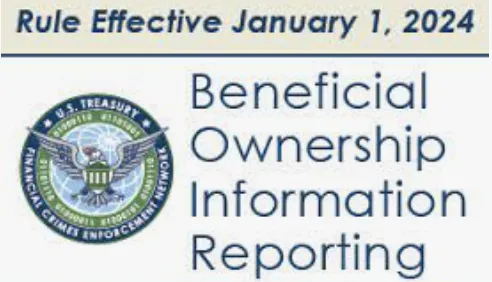When it comes to business tax reporting, understanding the differences between Form 1065 and Form 1120 is crucial for ensuring compliance with IRS regulations. Both forms serve the purpose of reporting income, gains, losses, deductions, credits, and other financial information to the IRS, but they apply to different types of entities and follow distinct taxation structures.
Both Form 1065, the Partnership Income Tax Return, and Form 1120, the US Corporation Income Tax Return, report to the IRS income, gains, losses, deductions, credits, and other information from an entity’s operations for the tax year. Form 1065 and Form 1120 differ primarily in the types of entities to which they apply, the taxation structure, and the specific reporting requirements. This article delves into the key differences between these two forms, exploring how they apply to various business structures, the specific reporting requirements, and the implications for tax planning.
Key Takeaways
- Each partnership must submit Form 1065 unless it has no taxable income or expenses that qualify for a deduction.
- Foreign partnerships with U.S. source income and nonprofit organizations with two or more members exempt from income tax under Section 501(d) are required to file Form 1065.
- A partnership does not pay federal taxes as a separate entity; all profits, gains, losses, credits, or deductions are “passed through” to the partners, who report their share of the partnership’s tax items on their individual tax returns.
- The partners are not granted an extension to pay taxes on the partnership’s distributive items; the extension only applies to filing the partnership’s return.
- All domestic corporations (including those in bankruptcy) must file Form 1120 by the 15th day of the 4th month following the end of their tax year.
- Whether they have taxable income or not, domestic corporations must file Form 1065 annually unless required or elect to file a special return.
- To request an automatic six-month extension to file the corporation’s income tax return, file Form 7004.
- An extension to file does not extend the time to pay.
- Corporate income is taxed twice: once at the entity level and again at the individual level when dividends are distributed to shareholders.
What Are The Key Differences Between Partnerships And C-Corporations In Tax Reporting?
A partnership, a pass-through entity, is a type of business structure in which two or more people, known as partners, agree to do trade or business, and each partner contributes money, property, and labor and shares the profits and losses of the company. A partnership exists whenever two or more people do business together, even if no agreements are signed. On the other hand, a corporation or LLC must file documents with the state to be formed.
A C-corporation is a tax classification, not a type of business structure like an LLC or corporation. It is the default tax classification for corporations, though corporations can elect to be S-corporations and have their income pass through. C-Corporations are treated as tax-paying entities separate and distinct from their shareholders for federal income tax purposes.
Partnerships and S-Corporations file information returns, Form 1065 or Form 1120-S, respectively, to report income that flows through to individual partners. In contrast, C-corporations use Form 1120 to pay corporate income tax on their profits. LLCs are flexible entities for tax purposes, and they will either default to being a disregarded entity for one owner or a partnership if there are multiple owners. However, LLCs can also file an election to be treated as a C-corporation or S-corporation for tax purposes.
A partnership is not generally required to file Form 1065 if it does not receive US income or incur any deductible expenses during the tax year. On the other hand, a corporation must file Form 1120 as long as the EIN is active, even if there was no income or expenses during the tax year.
For calendar-year entities, partnership returns are due March 15th, while corporate returns are due April 15th. You may file the next business day if the due date falls on a weekend or holiday. Both entity types can file for a six-month extension of time to file but must pay any tax owed on the original filing date, if any. If both entities have an income tax liability, it is advantageous for them to submit quarterly tax payments.
What are the Purposes of Forms 1065 and 1120?
Domestic partnerships and certain foreign partnerships use Form 1065, U.S. Return of Partnership Income, to report to the IRS their income, capital gains, losses, deductions, credits, and other information resulting from the operation of the partnership in the U.S. Domestic corporations, on the other hand, use Form 1120, U.S. Corporation Income Tax Return, to report their income, gains, losses, and deductions, as well as to determine their income tax liabilities.
What Types Of Businesses Are Required To File IRS Forms 1065 And 1120?
Form 1065
The following entities must file Form 1065:
- Every domestic partnership (domestic general, limited, and limited liability partnerships) must file Form 1065 unless it does not receive income or incur expenditures treated as credits or deductions for federal income tax purposes during the tax year.
- Multi-member limited liability companies (LLCs) that have not elected to be taxed as a C-corp
- Unincorporated businesses or joint ventures formed by more than one person and operating together.
- Non-profit religious or apostolic organizations are exempt from income tax under Section 501(d).
- A foreign partnership that derives gross income from U.S. sources or has gross income that is effectively connected with the conduct of a trade or business within the U.S.
Form 1065 is not required if any of the following conditions are met:
- A foreign partnership had no effectively connected income (ECI) during the tax year
- A foreign partnership with U.S. partners had an income of less than $20,000 during its tax year
- If the income of a foreign partnership with a U.S. partner had less than 1% of any partnership item of income, gain, loss, deduction, or credit that was allocable in the aggregate to direct U.S. partners at any time during its tax year
- The partnership is not a withholding foreign partnership as defined in Regulations Section 1.1441-5(c)(2)(i)
Form 1120
The following entities must file Form 1120:
- Domestic corporations (including those in bankruptcy), whether or not they have taxable income unless they are exempt under Section 501 or are required to file or elect to file a special return.
- Limited liability companies (LLCs) that have elected to be taxed as corporations
- A single-member LLC wholly owned by a foreign person. Foreign-owned disregarded entities (files a pro forma Form 1120 with Form 5472 attached).
- Farming corporations (other than a corporation that is Subchapter T Cooperative).
- Corporations with an ownership interest in a FASIT (Financial Asset Securitization Investment Fund).
- Quality Opportunity Fund organized as a corporation. To certify as a qualified opportunity fund (QOF), the corporation must file Form 1120 and attach Form 8996, even if the corporation has no income or expenses to report.
- Qualified Opportunity Investment (QOI) organized as a corporation. If the corporation held a qualified investment in a QOF at any point during the year, it must file its return with Form 8997 attached.
Filers of Form 1120: Special Variations
- Form 1120-S for S-Corporations
- Form 1120-C for Cooperatives
- Form 1120-L for life insurance companies
- Form 1120-H for homeowners associations
- Form 1120-F for foreign corporations
A foreign corporation must file Form 1120 if it (1) is engaged in a US trade or business, whether or not it has US source income from that trade or business, and whether or not income from such trade or business is exempt from U.S. tax under a tax treaty; (2) has income, gains, or losses treated as if they are effectively connected with the conduct of a U.S. trade or business; (3) is not engaged in a trade or business in the US but has income from any US source, if its tax liability has not been fully satisfied by the withholding of tax at source; (4) is making a tax refund; or (5) is or has a branch that is a qualified derivatives dealer (QDD).
What Is The Distinction Between Form 1065 And Form 1120 Filers?
- Form 1065 filer is a pass-through entity that does not pay federal tax at the entity level but is still required to report its income, gains, deductions, losses, and other credits. Instead, it “passes through” profits and losses to its partners, who then include their partnership’s share on their tax returns. A Form 1120 filer, on the other hand, must file an income tax return and make federal income tax payments at the entity level.
- Form 1065 filers are exempt from filing an income tax return if they have not received gross income or incurred any amount that may be eligible for a federal tax deduction or credit. On the other hand, Form 1120 filers must file an income tax return whether or not they had taxable income during the taxable year unless they are exempt from filing under Section 501.
- Form 1120 filers’ income may be subject to double taxation, whereas Form 1065 filers’ income is not. This is because profits distributed as dividends to shareholders are taxed again.
- Even if no distribution is made, partners must report and pay the appropriate tax on their portion of the partnership’s income on their personal income tax returns. In contrast, shareholders of corporations are subject to taxation once they receive their dividends.
Why Is It Important To File These Forms?
Form 1065
- Partnerships must file Form 1065 unless exempted to avoid penalties and interest for non-filing or late filing.
- The partnership return is essential because it provides a financial performance and position statement, including information about the partnership’s income, gains, losses, and allowable deductions for the taxable year. Schedule K-1 of Form 1065 calculates and documents a partnership’s distributive share of income, credits, and other amounts that each partner must report on their individual income tax returns.
Form 1120
- Form 1120 must be filed regardless of the corporation’s income to avoid penalties for non-filing unless it is exempt under Section 501 or elects to file a special return.
- Even if they are not subject to taxation, corporations must file tax returns to be eligible for any tax credits or refunds to which they are entitled.
- Submitting income tax returns is typically required to apply for certain types of loans or sales contracts.
What are the benefits of being a 1065 filer vs 1120 filer?
Benefits of Being a Form 1065 Filer
- Tax exemption at the partnership level: Form 1065 filers are exempt from paying federal income tax at the partnership level. Instead, the entities’ income, gains, losses, deductions, and other credits are directly passed through to the individual partners, who report their proportionate shares of the partnership’s tax items on their tax returns.
- Avoidance of double taxation: Form 1065 filers avoid double taxation because their income is only taxed once—at the individual partner level. Meanwhile, corporate income is taxed twice: once on corporate taxable income and again on dividends.
- The losses of a partnership are passed on to the partners, who can use them to offset income (subject to certain restrictions), resulting in tax savings. This can be especially beneficial to take losses in the early years of a business against other personal income to help reduce business development costs.
- Easier Dissolution: Dissolving a partnership is typically less complicated than dissolving a corporation. If the partners decide to split up, the process can be relatively straightforward, especially if it is clearly stated in the partnership agreement.
- Lower Compliance Costs: Partnerships and LLCs typically have lower compliance costs when compared to corporations. There could be fewer regulatory and reporting requirements.
Benefits of Being a Form 1120 Filer
- Separation of income: With the submission of Form 1120, income is separated from the individual’s tax return and taxed at the corporate level. This allows business owners to report less income on their tax returns while maximizing personal deductions and credits. The company can then reinvest the retained earnings and grow the company without paying dividends taxed a second time, allowing a smart business owner to quickly build more successful businesses and grow their assets (think Warren Buffett).
- Losses carry forward and other deductions: Business losses (carried forward over multiple years), medical insurance premiums and other fringe benefits, salaries, and bonuses (including reasonable wages paid to shareholders) are just a few business expenses and credits that C-corporations can deduct. Corporations may have more flexibility in providing certain employee benefits. Corporations can carry forward or back net operating losses to reduce their overall tax liability by offsetting taxable income from other years.
- Relief from Self-Employment Tax: Income earned on Form 1065 is typically taxed at ordinary income tax rates and self-employment tax of 15.3% for the individual owner if a US person. Form 1120 filers are exempt from self-employment tax, but shareholders who work for the company must pay themselves reasonable compensation for their services.
- Additional Credits and Deductions: Certain deductions are available only to corporations and not to other types of organizations. For example, the Foreign Derived Intangible Income (FDII) deduction, which reduces the effective tax rate to 13.125%, is only available to 1120 filers.
To learn more about C-Corporation taxation, visit our C-Corp Tax Guide.
What Are The Tax Implications Of Filing Form 1065 Vs Form 1120?
Forms 1065 and 1120 are tax forms with different tax implications used by various business entities. Here’s a quick rundown of the tax implications and issues associated with Forms 1065 and 1120.
Form 1065
- Filing Form 1065 indicates that the filer is a pass-through entity not subject to federal income tax.
- When a partnership files Form 1065, it implies that it has either earned gross income or incurred any amount eligible for federal income tax treatment as a deduction or credit. This means that some partnership tax items are directly passed through to the partners, who must declare and pay any tax due on their distributive share of partnership items on their personal tax returns.
- Filing Form 1065 also implies that the filing entity can pass through various tax credits and deductions to individual partners, allowing them to take advantage of these benefits on a personal tax basis.
- The filing of Form 1065 also triggers the partnership’s obligation to provide each partner with their individual K-1, which details their share of the partnership’s income, deductions, credits, and other tax-related items. Partners use this information to complete their tax returns.
- Partnerships are also subject to state tax laws, with the tax implications varying depending on the jurisdiction. When filing Form 1065, it is crucial to consider state-specific rules and regulations.
- Members of LLCs classified as partnerships and partners of partnerships (if US persons) are subject to a 15.3% self-employment (SE) tax on their share of the entities’ income from a trade or business.
- Individuals with income above the statutory threshold amounts ($200,000 for individuals filing as single or head of the family, $250,000 for married couples filing jointly, and $125,000 for married couples filing separately) are subject to a 3.8% NIIT on certain net investment income (capital gains, rental, interest, etc. not derived in the ordinary course of an active trade or business). The tax will be reported and paid using Form 1040
Form 1120
- Filing Form 1120 implies that, regardless of filing extensions, a corporation must pay 21% income tax at the time of filing their returns.
- Filing Form 1120 also implies that net corporate income, if distributed as dividends, may be subject to double taxation.
- Corporations can reduce their taxable income by filing Form 1120, which allows them to take advantage of various tax credits and deductions. These may include R&D credits, investment credits, and certain business expenses such as fringe benefits and health insurance premiums that many pass-through business owners cannot deduct.
- C-corporations can claim a 37.5% FDII deduction, resulting in permanent tax benefits and a 13.125% effective tax rate for tax years beginning after December 31, 2017, and before January 1, 2026, after which the deduction is reduced to 21.875%, resulting in a 16.406% effective tax rate.
- The Global Intangible Low Tax Income (GILTI) deduction, which allows for a 50% reduction in taxable pass-through income received from foreign subsidiaries, is available only to US shareholders (corporations and individuals) of foreign corporations.
- Form 1120 filers are exempt from self-employment tax, but shareholders who work for the company must pay themselves reasonable compensation for their services. C-corporations have more flexibility in providing certain employee benefits, such as health insurance, retirement plans, and other perks.
- Corporations may be subject to state taxes in addition to federal taxes, with the tax implications varying depending on the state’s tax laws.
Are There Tax Savings Or A Financial Benefit To Filing Form 1065 Vs. Form 1120?
Form 1065
- The partner’s share of a partnership’s losses can be used to offset income from other sources, resulting in tax savings. In addition, partners benefit from various tax shelters in the form of tax deductions. These include the ability to deduct charitable contributions, mortgage interest, student loan interest, certain medical expenses, and more when filing their personal income tax return.
- Also considered acceptable types of tax shelters are investment and retirement accounts that shield income from taxation.
Form 1120
- Form 1120 filers’ tax obligations can be significantly reduced by taking advantage of various credits and allowable deductions, including but not limited to business losses (carried over several years), health insurance premiums, medical insurance premiums, salaries, and bonuses (including wages paid to shareholders), and other fringe benefits.
- Section 250 of the IRC allows a deduction equal to the sum of 37.5% of the corporation’s FDII (lowering the effective tax rate to 13.125%) and 50% of its GILTI for tax years beginning January 1, 2018, and before January 1, 2026 (after that, these deductions are reduced to 21.875% and 37.5%, respectively), thereby reducing taxable income. As a result, the tax liability is reduced.
- Reasonable salaries paid to shareholders who work for the company are allowable deductions and are not subject to self-employment tax.
- C-corporations are exempt from the 3.8% net investment income tax (NIIT). The NIIT is a tax that is imposed on certain types of investment income for estates, trusts, and individuals who meet certain income thresholds, but it does not apply to corporate entities like C-corporations.
What Are The Drawbacks Of Filing Form 1065 Vs. Form 1120?
Form 1065
- Corporate income is taxed at a flat rate of 21%. In contrast, the partner’s share of the partnership’s distributive earnings may be subject to a significantly higher personal income tax rate of 22% to 37%.
- When partners leave profits in the business rather than withdrawing them, this is referred to as retained income. The IRS requires the partners to pay taxes on their share of the partnership’s income as if it had been distributed. Payments to partners are not wages but guaranteed payments subject to self-employment tax at 15.3% for the individual owner if a US person.
- Net Investment Income Tax (NIIT) of 3.8% is levied on certain net investment income (capital gains, rental, interest, etc.) of individuals with income above the statutory threshold amounts. The tax will be reported and paid with Form 1040.
- Form 1065 filers, unlike corporations, are not eligible for FDII and GILTI deductions.
Form 1120
- C-corporations must pay federal income tax on their income, and they are taxed again when they distribute dividends to shareholders.
- Corporations may be subject to accumulated earnings tax when they accumulate earnings beyond what is considered reasonable for the needs of the business. This tax is designed to prevent the avoidance of individual income tax by retaining earnings in the corporation.
When are Forms 1065 and 1120 Due?
Form 1065
- Generally, a domestic partnership must file Form 1065 by the 15th day of the third month following the date its tax yearended,d unless an extension is filed.
- If the company follows a calendar year, file Form 1065 by March 15.
- If the company uses a fiscal year, it has until the 15th of the third month after the end of the tax year to file its tax return.
Form 1120
- Form 1120 is typically due on the 15th of the fourth month following the end of the corporation’s tax year. To request a six-month extension, you must submit Form 7004 by the return’s regular due date.
- Corporations filing on a calendar year basis: the 15th of April, following the end of the tax year
- New corporation filing a short-period return: by the 15th day of the 4th month after the short period ends
- Corporations with a short tax year that ends in June will be treated as if it ended on June 30: By the 15th day of the third month following the end of its tax year
- Corporation with a fiscal year ending June 30: The 15th day of the 3rd month following the end of its tax year
- Dissolved Corporation: The 15th day of the 4th month following the date of dissolution
Are There Penalties For Filing The Forms Late Or Incorrectly?
Form 1065
- A late filing penalty is imposed if a partnership fails to file Form 1065 by the due date or files a return that does not include all of the required information unless the failure is due to a reasonable cause.
- Failure to file the return by the due date or failure to show all of the required information results in a penalty of $235 per month or fraction thereof (up to a maximum of 12 months) that the return is late or incomplete, multiplied by the total number of persons who were partners at any time during the partnership’s tax year for which the return is due.
- A $310 penalty may be imposed for each Schedule K-1 that the partnership failed to provide when due or did not contain all of the required information, with a maximum penalty of $3,783,000 for entities with gross receipts over $5,000,000. For those with gross receipts of not more than $5,000,000 is $1,261,000.
- If the requirement to report correct information in K-1 is willfully ignored, each $310 penalty is increased to $630 or 10% of the aggregate amount of items required to be reported, whichever is greater. When there is willful disregard, the penalty has no upper limit.
- For tax years beginning in 2021, partnerships must file Schedules K-2 and K-3. Schedules K-2 and K-3 are subject to the same penalties as Form 1065 and Schedule K-1, respectively.
- Penalties for Form 5472: Failure to file Form 5472 when due and in the manner prescribed will result in a $25,000 penalty per related party. If the failure to file continues for more than 90 days after notification by the IRS, an additional penalty of $25,000 will be imposed on each related party for each 30-day period (or part of a 30-day period) thereafter, with no maximum penalty.
Form 1120
- A corporation will be penalized for failing to file on time unless it can show that the failure was due to reasonable cause.
- A corporation may be fined 5% of the unpaid tax for each month or fraction of a month that its return is late, up to 25% of the unpaid tax, if it fails to file its return by the deadline, including extensions.
- The minimum penalty for a tax return required to be filed in 2024 that is more than 60 days late is the lesser of the tax due or $485
- In addition, if the tax is not paid in the amount indicated on the return, a Failure to Pay Penalty of 12 of 1% or 0.5% is applied to the outstanding balance for each month or part of a month that the tax is not paid, up to a maximum penalty of 25% of the unpaid tax.
- Penalties for Form 5472: A penalty of $25,000 per related party will be assessed for failure to file Form 5472 when due and in the manner prescribed. If the failure to file continues for more than 90 days after notification by the IRS, an additional penalty of $25,000 will be imposed on each related party for each 30-day period (or part of a 30-day period) thereafter, with no maximum penalty. There may also be criminal consequences for failing to submit information or filing false or fraudulent information, as outlined in Sections 7203, 7206, and 7207.
What Documents Must Be Submitted With Each Form?
Various forms and schedules may be required, depending on the specific circumstances of the partnership or corporation. Read the instructions for each form carefully before submitting Form 1065 or Form 1120 to determine which ones apply to you based on your specific circumstances. Schedules and forms that may be required include the following.
Form 1065
- Form 8825, Rental Real Estate Income and Expenses of a Partnership or an S Corporation (if required)
- Schedule D, Capital Gains and Losses
- Form 4797, Sales of Business Property
- Form 8949, Sales and Other Dispositions of Capital Assets
- Form 8996, Qualified Opportunity Fund
- Form 1125-A, Cost of Goods Sold
- Form 8941, Credit for Small Employer Health Insurance Premiums
- Form 6252, Installment Sale Income
- Form 8997, Initial and Annual Statement of Qualified Opportunity Fund (QOF) Investments
- Form 8938, Statement of Specified Foreign Financial Assets
- Form 8865, Return of U.S. Persons With Respect to Certain Foreign Partnerships
- Any other schedules, including Schedules K-1, K-2, and K-3
- Form 7004, Application for Automatic Extension of Time To File Certain Business Income Tax, Information, and Other Returns
Other forms that partnerships may be required to file may include, but are not limited to, the following:
- Form W-2, Wage, and Tax Statement
- Form W-3, Transmittal of Wage and Tax Statement
- Form 720—Quarterly Federal Excise Tax Return
- Form 940—Employer’s Annual Federal Unemployment (FUTA) Tax Return
- Form 941—Employer’s QUARTERLY Federal Tax Return
- Form 944—Employer’s ANNUAL Federal Tax Return
- Form 945—Annual Return of Withheld Federal Income Tax
- Forms 1042 and 1042-S—Annual Withholding Tax Return for U.S. Source Income of Foreign Persons; and Foreign Person’s U.S. Source Income Subject to Withholding
- Form 1065-X—Amended Return or Administrative Adjustment Request (AAR)
- Forms 1095-B and 1094-B—Health Coverage; and Transmittal of Forms 1095-B (required to be filed by certain health insurance issuers)
- Forms 1095-C and 1094-C—Employer-Provided Health Insurance Offer and Coverage; and Transmittal of Forms 1095-C
- Form 5471—Information Return of U.S. Persons With Respect to Certain Foreign Corporations
- Form 8300—Report of Cash Payments Over $10,000 Received in a Trade or Business
- Form 8832—Entity Classification Election
- Form 8886—Reportable Transaction Disclosure Statement
- Form 8992, U.S. Shareholder Calculation of Global Intangible Low-Taxed Income (GILTI)
- FinCEN Form 114, Foreign Bank Account Report (FBAR)
Notes for Schedules K-2 and K-3
For tax years starting in 2021, partnerships must file Schedule K-2 and Schedule K-3. Schedule K-2, a 19-page form and an extension of Schedule K, reports items of international tax relevance. In contrast, Schedule K-3, an extension of Schedule K-1, reports a partner’s distributive share of global income, credits, and deductions. Even partnerships with no international activity or offshore assets may be required to file these schedules if foreign partners or shareholders claim a foreign tax credit on their personal tax returns for activities outside their businesses. The new schedules add significant new reporting requirements for partnerships. They involve complex international tax concepts and need a deep understanding of many rules, including the FDII rules, the dual-consolidated-loss rules, Section 267A, and the Subpart F and GILTI rules.
Partnerships must collect extensive data to complete Schedules K-2 and K-3, including partners’ or shareholders’ information and details of business transactions, such as investments, for the applicable tax year, both within and outside the United States. The process involves reviewing investments and confirming partners’ or shareholders’ foreign or U.S. status. Given the complexity of these forms, not to mention that they are time-consuming, it is best to seek the assistance of our tax professionals.
Form 1120
- Schedule N
- Schedule D is used to report capital gains and losses during the tax year
- Form 4797, Sales of Business Property
- Form 8949, Sales and Other Dispositions of Capital Assets
- Form 8996, Qualified Opportunity Fund
- Form 8050, Direct Deposit of Corporate Tax Refund
- Form 1125-A, Cost of Goods Sold
- Form 4136, Credit for Federal Tax Paid on Fuels
- Form 8978
- Form 965-B, Corporate and Real Estate Investment Trust (REIT) Report of Net 965 Tax Liability and Electing REIT Report of 965 Amounts
- Form 8941-Credit for Small Employer Health Insurance Premiums
- Form 3800, General Business Credit
- Form 6252, Installment Sale Income
- Form 8997, Initial and Annual Statement of Qualified Opportunity Fund (QOF) Investments
- Schedules B, Additional Information for Schedule M-3 Filers
- Schedule D, Capital Gains and Losses
- Schedule G, Information on Certain Persons Owning the Corporation’s Voting Stock
- Schedule M-3, Net Income (loss) Reconciliation for Corporations With Total Assets of $10M or More
- Schedule N, Foreign Operations of US Corporations
- Schedule O, Consent Plan and Apportionment Schedule for a Controlled Group
- Schedule PH, U.S. Personal Holding Company (PHC) Tax
- Schedule UTP, Uncertain Tax Position Statement
- Form 4562 should be attached if the corporation claims depreciation and amortization expenses.
- Form 5472 must be completed and attached to Form 1120 by foreign-owned domestic disregarded entities.
- Form 7004, Application for Automatic Extension of Time To File Certain Business Income Tax, Information, and Other Returns
The following, among others, are additional forms that partnerships might be required to file:
- Form 1120-W, Estimated Tax for Corporations: A corporation with a tax obligation of $500 or more for the tax year should file Form 1120-W along with Form 1120.
- Form 1120-X, Amended U.S. Corporation Income Tax Return
- Form 5471—Information Return of U.S. Persons With Respect to Certain Foreign Corporations
- Form 8832 must also be filed and attached to Form 1120 if a business elects to be taxed as a corporation.
- Form 8886, Reportable Transaction Disclosure Statement,
- Form 8938, Statement of Specified Foreign Financial Assets
- Form 8992, U.S. Shareholder Calculation of Global Intangible Low-Taxed Income (GILTI)
- Form 8993, Section 250 Deduction for Foreign-Derived Intangible Income (FDII) and Global Intangible Low-Taxed Income (GILTI)
- FinCEN Form 114, Foreign Bank Account Report’ or ‘FBAR
Which Form Do I Need To File, Form 1065 or Form 1120?
The type of business entity you own and the tax classification you choose will determine which form you must file, which taxes you must pay, and how you should pay those taxes. Knowing your business structure is crucial in determining your tax obligations because different business structures are subject to different tax laws and regulations. Your business structure can significantly impact your tax obligations and the complexity of tax reporting. If you are unsure whether your company is a corporation, partnership, or another type of entity, reviewing the official documents submitted during the organization or establishment of the business can provide clarity. LLCS must check if a specific tax classification was chosen because it can significantly impact how the business is taxed and what forms it must file. Knowing these specifics can help you pay your taxes on time and even identify opportunities to improve your tax position.
- Corporations are treated as separate legal entities for tax purposes and are taxed as C-corporations by default. Form 1120 must be filed.
- Form 1065 should be used for businesses organized as partnerships.
- The IRS treats a multi-member LLC as a partnership by default for federal tax purposes unless it elects to be treated as a C-corporation or S-corporation. If no election is made, use Form 1065.
- Use Form 1120 if an LLC has elected to be taxed as a C-corp.
What Are The Most Common Filing Errors For Each Form?
The following are some of the most common errors made when filing Form 1065 or Form 1120:
- Entities that file late or after the extension deadline will be assessed a failure to file penalties and interest if tax is owed.
- Failure to pay the entire amount due on the original due date
- Entering incorrect information, such as a taxpayer identification number and address
- Mathematical errors, such as transposition errors, when entering income or expenses
- Entering incorrect amounts for business income or expenses
- Incorrectly claiming tax credits and deductions
- Items entered on the wrong line
- Missing or incomplete required schedules or forms
- Paper filing mistakes: forgetting to sign, mailing the tax return to the wrong IRS office, missing forms, and arranging forms and schedules in the wrong order
How To Avoid Common Tax Return Errors
Here are some tips on how to properly file Form 1065 or Form 1120:
- Determine the appropriate form to file for your company based on its structure and tax classification.
- Make a checklist of required tax documents.
- Prepare documents and gather all necessary forms and schedules before filing.
- Make sure that financial information is reported on the correct line.
- Check the accuracy of your tax return by proofreading and reviewing it; ensure your basic information (name, address, and EIN) is entered correctly.
- File your return on time.
- Use tax software or an online filing service that supports Form 1065 or Form 1120 to avoid math errors.
- Whenever possible, file your tax returns electronically with the IRS.
How To Avoid Or Reduce Income Tax Penalties And Late Fees
Form 1065
- File an accurate Form 1065 along with the necessary forms and documents on time.
- If you need more time to file a complete and accurate return, request an automatic 6-month extension by filing Form 7004 on or before the deadline for filing Form 1065.
- Ensure you furnish all the partners with their respective Schedule K-1 on time and with all the required information to avoid being penalized.
- Request a penalty abatement if you cannot file or pay the tax on time for a legitimate reason.
Form 1120
- File your tax returns and pay your taxes on time.
- If you cannot file a complete and accurate return by the deadline, request an extension with the IRS.
- Even if you are unable to pay the tax, file your return by the due date or extended due date.
- If you cannot pay your taxes in full on time, pay at least a portion of the tax due or as much as feasible by the original deadline, then settle the balance as soon as possible.
- If you cannot pay within a few months of the due date, request a payment plan from the IRS.
- In case of failure to file or pay the tax due on time due to reasonable cause, request a penalty abatement.
Are There Any Tips, Ticks, Or Hacks For Each Form?
Form 1065
- E-file whenever possible
- Filing Form 7004 extends the deadline for the partnership to file its information return but does not extend the deadline for the partner to pay any taxes. As a result, determine each partner’s taxable income and each partner must pay taxes on this amount by the original deadline.
Form 1120
- Even if you request an extension, pay the tax in full by the deadline. Remember that the extension only extends the deadline for filing tax returns, not the deadline for paying taxes.
- To make it easier to complete all returns, the corporation should round off cents to whole dollars on its forms and schedules.
- Include cents when adding amounts, and round off only the total if two or more amounts need to be added to determine how much to enter on a line.
- Visit our blog for more tips on how to prepare Form 1120.
What Happens If The Entity’s Forms Contain Errors?
Form 1065
- To correct a previously filed return, partnerships under BBA must file an “Administrative Adjustment Request” (AAR) rather than an amended return. This applies to taxable years beginning after December 31, 2017, as well as partnerships that elect into the BBA regime for taxable years beginning after November 2, 2015 but before January 1, 2018.
- For electronically filed returns, file Form 8082 along with Form 1065 and check box G(5) “Amended Return” section.
- For paper-filed returns, file Form 1065-X. The deadline is within three years after the original return was filed or the last day of filing the partnership return, whichever is later.
- A non-BBA partnership must file an amended return electronically using Form 1065 or 1065-B, as applicable. If the partnership is not filing electronically, use Form 1065-X. For electronic filing, use Form 8082 in conjunction with Form 1065. The deadline is within three years after the filing of the original return.
Form 1120
- A corporation must file an amendment using Form 1120 X (Amended U.S. Corporation Income Tax Return) within three years of filing its original return or two years of paying the tax (if claiming a refund), whichever is later.
- An amended return filed prior to the deadline is considered to have been filed on the due date.
- If the amendment causes the owed tax to be underpaid, a penalty and interest will be assessed based on the amount of the underpayment and the period during which it was due and underpaid.
Where Can I Get The Most Recent Versions Of Forms 1065 And 1120?
The most recent versions of Form 1065 and Form 1120, as well as their respective instructions, are available on the IRS website. It is essential to regularly check the Internal Revenue Service (IRS) website because tax forms, regulations, and guidelines are subject to periodic changes. Keeping up with these changes is crucial to remain compliant and understand how they may affect your tax and financial reporting.
Can Cleer Assist Me In Filing My Tax Return?
Effectively navigating the complex and ever-changing landscape of tax laws is paramount for businesses, ensuring compliance and optimal tax outcomes. At Cleer Tax, our committed team of tax professionals stays abreast of these developments. We work closely with clients to identify and optimize allowable deductions, leverage tax credits and incentives, and ultimately minimize their tax liabilities. Our proactive stance ensures adherence to tax laws and regulations and shields our clients from penalties and legal complications.
Cleer provides Corporate Income Tax Packages encompassing federal and state income tax filings for a hassle-free experience. We also offer all-inclusive bookkeeping packages, which include your monthly statements plus your federal and state tax returns. If you need help getting up to date on your books, we also offer support for companies that have fallen behind on their bookkeeping with our bookkeeping catch-up package.
If you need any help reducing your tax liability, schedule a consultation, or feel free to contact us.






